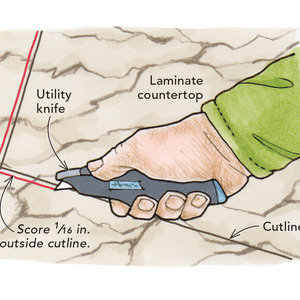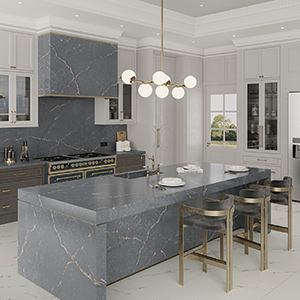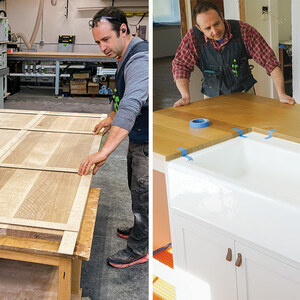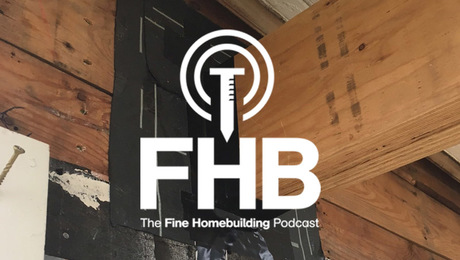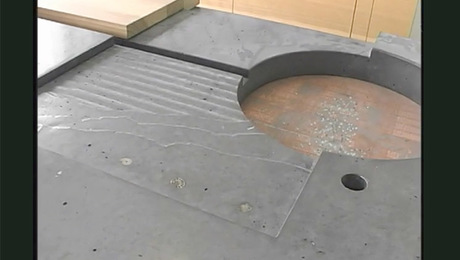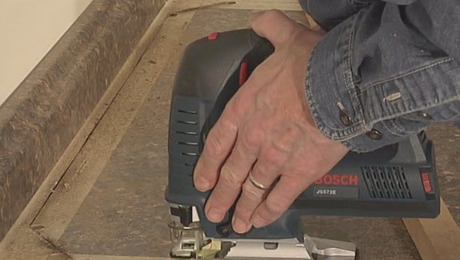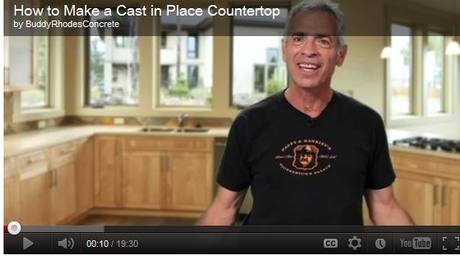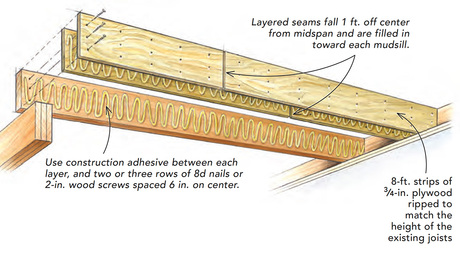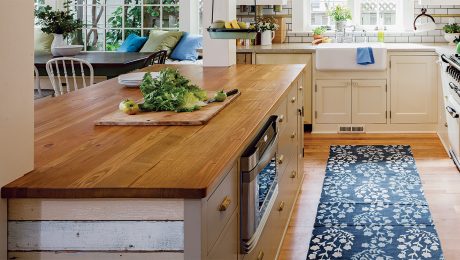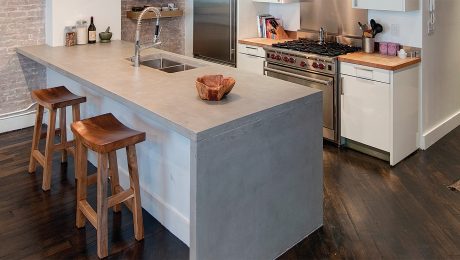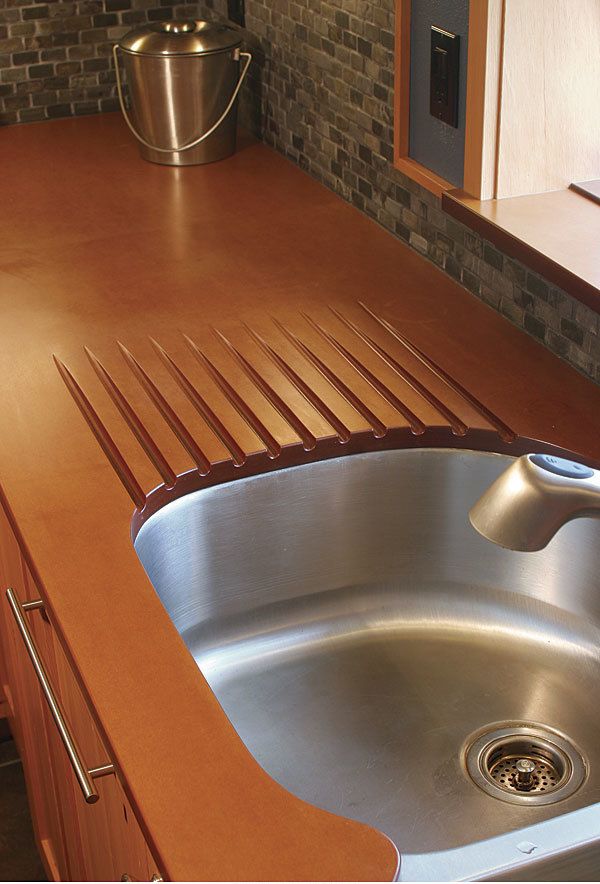
As a professional woodworker and remodeler, I have worked with most every countertop material available. I’ve glued up my own butcher-block counters, and I’ve subbed out acrylic, quartz, and granite counters to specialist fabricators. Each product has its pluses and minuses. But when it came time to select a counter material for my kitchen, I chose PaperStone for a variety of reasons (www.paperstoneproducts.com).
First, I can fabricate it myself with carbide-tipped woodworking tools. I don’t need diamond-tipped saws and grinders to work this material. That saves me the cost of hiring the job out to specialists, and it saves my clients some money when I install these counters in their kitchens. That’s because unlike products from a fabricator where the lineal inches of edge can greatly influence the price, I can charge just by the material and my labor.
PaperStone is manufactured in thicknesses of 3/8 in., 1/2 in., 3/4 in., 1 in., and 1-1/4 in. I typically use the 1-in.-thick material because it has the visual weight of quartz and granite products without quite as much physical weight (it’s still heavy). Full sheets are 60 in. by 144 in., but it can be purchased in smaller sizes.
I also like this material because it’s made from 100% postconsumer recycled paper that’s bonded together under heat and pressure with nonpetrochemical phenolic resins. Because it’s made from recycled materials, the colors are all on the dark side, which can be limiting for some clients. Current colors are slate, cabernet, chocolate, denim, evergreen, gunmetal, leather (my favorite, photo above), mocha, and sienna. The material costs around $40 per sq. ft., and, unlike some countertop materials, you don’t have to take a certification class to purchase it.
I remove any shipping or handling scratches with an orbital sander and 120-grit paper. If I need to join two sheets, I use my Festool saw, router, and fence system to get perfect cuts. I use plastic biscuits and epoxy for the joinery, and I don’t presand the seam area, which allows me to sand the seam flush. I finish it by orbital-sanding up to 320 grit. Then I buff it with a gray Scotch-Brite pad and apply Osmo Polyx-Oil. Cleaning can normally be done with just a damp cloth, but a little diluted CitraSolv will leave it clean and glowing.
PaperStone is about as hard as plastic laminate, so it can be scratched. When the screws on some drawer bottoms dug some deep scratches in our counter, I was able to repair them easily and completely. But be careful not to oversand. You can go through layers of paper and get a ghosting appearance in the surface.
For an undermount sink, I drill and tap 10/24 machine screws and use Phenoseal clear adhesive caulk. I typically make plywood brackets that pull the sink tight by the screws. This works great for stainless-steel kitchen sinks as well as smaller porcelain vanity sinks.
I am finding many uses for the offcuts. They make excellent (and dishwasher-safe) cutting boards, and I always make one for the client from the sink cutout. I also machine the scraps for window stools, floor transitions, and heavy-wear surfaces in cabinets.
Photo: Charles Miller


